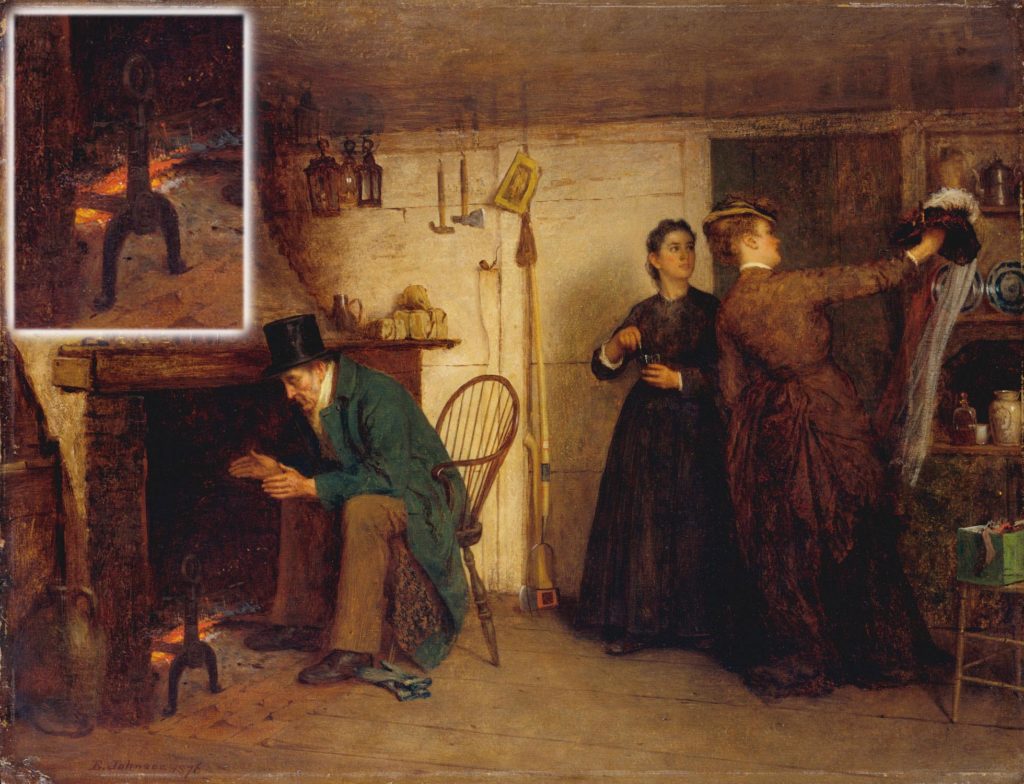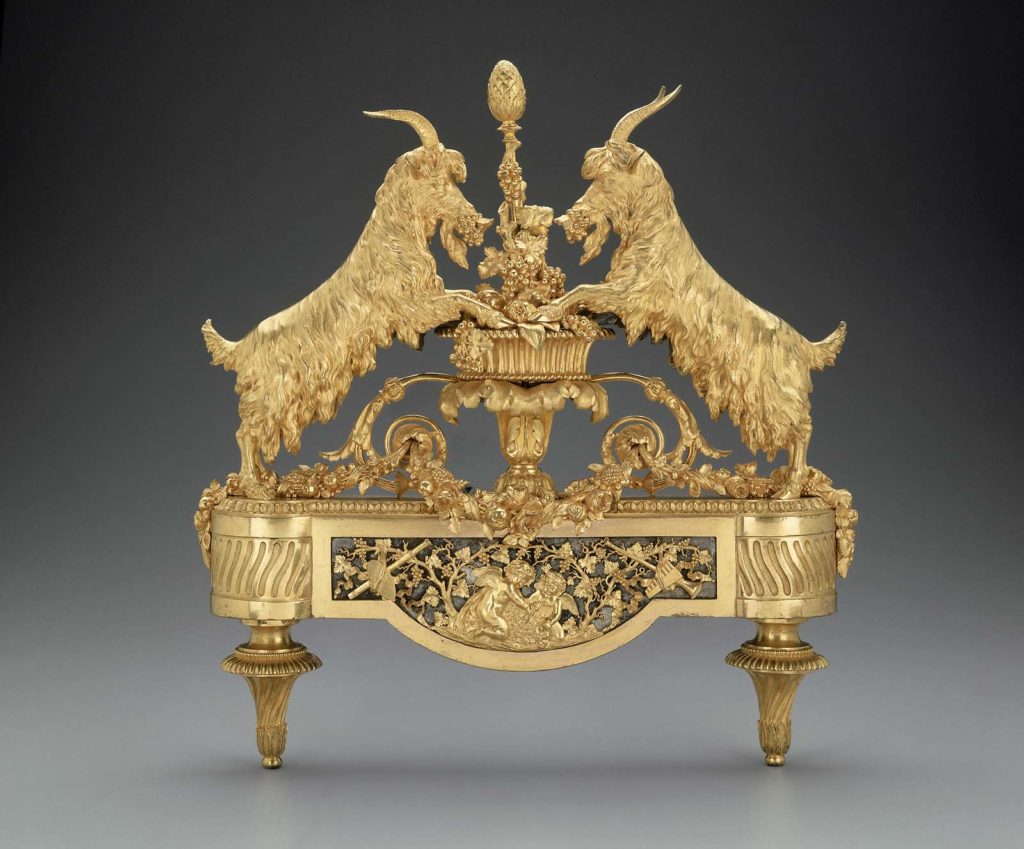Featured Fragment – Cast Iron Andirons
By Kerry S. González
In October 2016 Dovetail Cultural Resource Group conducted data recovery excavations at a multi-component site with the primary core representing an early-nineteenth through early-twentieth century domestic occupation (31RD1426&1426**) located in Randolph County, North Carolina. The project was completed on behalf of the North Carolina Department of Transportation, in compliance with their Data Recovery Plan, and the overall Phase III assemblage contained nearly 25,000 artifacts. This blog is the first in a series of entries highlighting the plethora and variety of objects recovered from the site.
The first artifacts discussed in this series are a pair of cast iron andirons, sometimes referred to as fire dogs. These form a matching pair but neither is complete however they mirror the pair shown in the image below. They are in different stages of corrosion and were recovered from separate contexts approximately 20 feet apart on either side of the central chimney once associated with a standing dwelling.

Image Showing Complete Set of Andirons in the Same Style as Those Recovered From Site 31Rd1426/1426** (Wiles 2017).
Andirons were used in fireplaces to elevate large burning logs. This allowed oxygen to easily circulate around the logs and feed the flames, rendering a more efficiently burning fire. Because fireplaces often served two purposes, heating a room and as a heat source for cooking, it was important to have a constant fire in the hearth; this was greatly aided by the andirons.

Eastman Johnson Painting “The New Bonnet” Showing Andiron in Similar Style to the Ones Recovered From Site (The Metropolitan Museum of Art [MET] 2017).
Andirons have been used in fireplaces for centuries. For those with means, andirons were often highly embellished and served in both their utilitarian capacity and as an interior decoration. The practice of using andirons as a canvass for artistic expression began during the medieval period when blacksmiths began adding embellishments to andirons. For example, an andiron from the fourteenth century was forged with a serpent head extending from the top (Apartment Therapy 2018). Throughout the Renaissance period and into the eighteenth century, andirons continued to be designed with motifs such as ancient Greek and Roman statuary or molded in the form of animals. An elaborate set of andirons on display at the Museum of Fine Arts in Boston were reportedly used by Marie Antoinette at Hameau de la Reine, the Queen’s rustic retreat, located in the park of the Chateau de Versailles. These andirons display two goats eating grapes from a central urn. Beneath the goats is a relief of cupids and grape vines (Museum of Fine Arts Boston 2018).
While decorative andirons clearly reflected the tastes of their owners, the andirons found at site 31RD1426&1426**—although plain—speak volumes. The occupants of the site were tenant farmers who eked out a meager existence in the North Carolina Piedmont but they still sought technological items that helped to render a more efficient (and warmer!) household.
So, as you are sitting in your home this winter trying to stay warm, contemplate the possible shapes and styles of andirons and what you may have commissioned if you had the monetary freedom to do so.
Any distributions of blog content, including text or images, should reference this blog in full citation. Data contained herein is the property of Dovetail Cultural Resource Group and its affiliates.
References:
Apartment Therapy
2018 Quick History: Andirons. Electronic document, https://www.apartmenttherapy.com/quick-history-andironsretrospe-149729, accessed January 2018.
The Metropolitan Museum of Art
2017 The New Bonnet, Accession Number 25.110.11. Electronic document, https://www.metmuseum.org/toah/works-of-art/25.110.11/, accessed January 2018.
Museum of Fine Arts Boston
2108 French Andirons. Accession Number 27.521.1-2.11. Electronic document, https://www.mfa.org/collections/object/andiron-505383, accessed January 2018.
Wiles, Tom
2017 Repurposed fireplace andirons holds planter box. In Pinterest [Personal Page]. Electronic document, https://www.pinterest.com/pin/314266880220703842/, accessed June 2017


